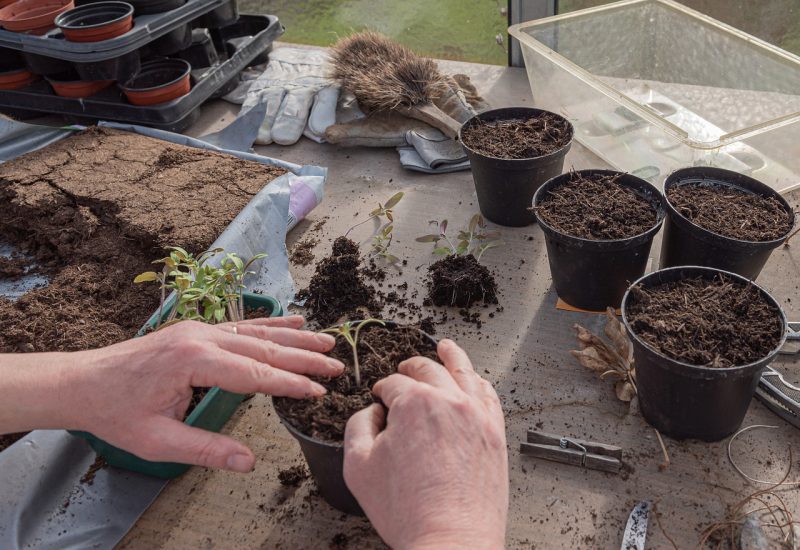If you’re curious about how long do peat pots last, you can expect that they can be of service from months to a whole year. This duration is not as long as what fabric pots can provide, but many gardeners consider using peat pots for container gardening due to various benefits. We all know that peat moss is useful for moisture retention and improving the aeration of the medium, so as a pot, they readily add to the soil over time.
You can think of peat pots as biodegradable pots, which is why they have a short lifespan. Those who want to minimize the use of plastics can consider peat pots because they simply disintegrate and become part of the soil. Your plants will also be safe from transplant shock because you do not disturb their roots due to the peat pot that decomposed.

How Long Do Peat Pots Last And Tips To Make The Most Out Of Them
Expected lifespan of peat pots
As mentioned earlier, peat pots can last from months up to a year. And the quicker they degrade, the more you can trust that the pot is made of biodegradable materials. Therefore, some peat pots can disintegrate before the growing season ends.
Still, peat pots make an excellent consideration for container gardening. Even though they are biodegradable, they are still large and thick enough to support a plant’s growth. Their lifespan also makes them excellent containers for transplants and repotting to prevent shock since the pots will just become part of the soil.
When to use peat pots?
The most common way gardeners use peat pots is for transplanting seedlings. If the weather outside is still not supportive of plants, you can use peat pots and a greenhouse to give you more time until the weather subsides. You can also continue growing the plants indoors and let the peat pots mix into the garden bed.
Another way to use peat pots is for starting plants until they reach the right size for ground planting. You can grow the plants in peat pots for a month or two before transplanting them to the ground for this usage. Some common plants that benefit from peat pots are cucumbers, squash, and melons because they are prone to transplant shock.
How to use peat pots?
Using peat pots is quite simple, but remember to keep them consistently moist. Remember that the material they use is more absorbent, so you want to ensure that the plant still takes up enough water through their roots. You can mist several times and use a moist potting mix to make up for the pots absorptive qualities.
You can also readily plant peat pots in the ground, especially if you’re using plants that don’t like their roots getting disturbed. These containers should decompose, and the roots will remain undisturbed. However, be mindful of some crops that can become root bound if the pots do not completely degrade.
You want to plant them deeper in the soil and bury the whole pot or tear off the rim of the pot. The latter is necessary not just to prevent the roots from being trapped, but also to ensure that the plant will receive water and the pot doesn’t wick it away. Afterward, you can add the remains of the pot, if there are any left, in a plant bed or compost pile.
How To Grow In Peat Pots
To start planting in peat pots, you want to fill them with potting soil and place them in a tray. Since they are absorbent, you should pour water onto the tray and let them soak it up. Remove the peat pots from the water and plant your seeds or seedlings as you would with any container.
You can use a greenhouse for peat pots and place them somewhere bright and warm. To maintain moisture, you can mist them, but you can also set the pots in a tray of warm water when you notice them drying out. Depending on your plants, you may be ready to transplant the seedlings after a month or two.
Dig a hole to receive the whole pot and tear its rim off if necessary, so no part wicks the plants’ moisture. Remember that if a part of the pot doesn’t wholly disintegrate and gets exposed, peat can dry out and prevent the roots from taking up water. At this point, you can wait for the peat pots to decompose and maintain your plants according to their growth needs.
Conclusion
If you’re considering container gardening, one of the materials that would be excellent is peat pots. But how long do peat pots last? Peat pots are useful for months up to a year because they are biodegradable.
This makes them excellent for plants prone to transplant shock, or in combination with a greenhouse, for keeping plants until the climate outdoors stabilized. However, do note that these pots are absorbent, so you want to maintain soil moisture for the plants. More so, some don’t disintegrate completely, so consider burying them in the soil or tear off their rims if your plants don’t like getting their roots disturbed.
